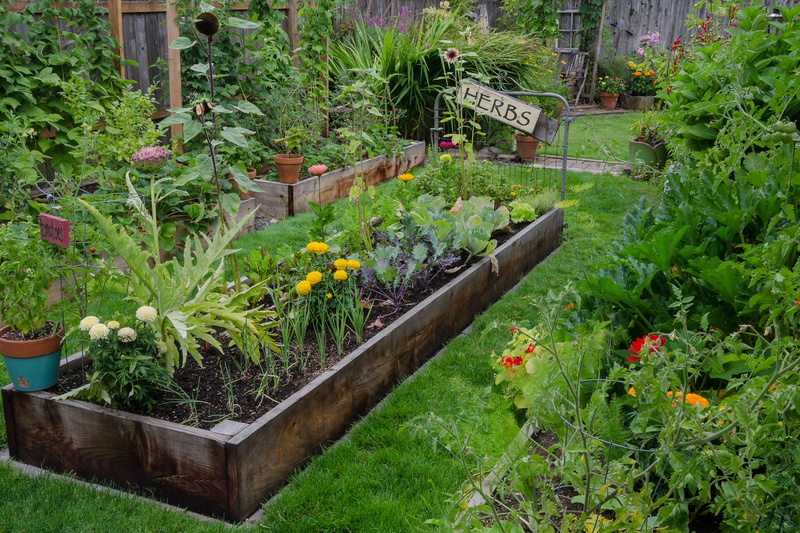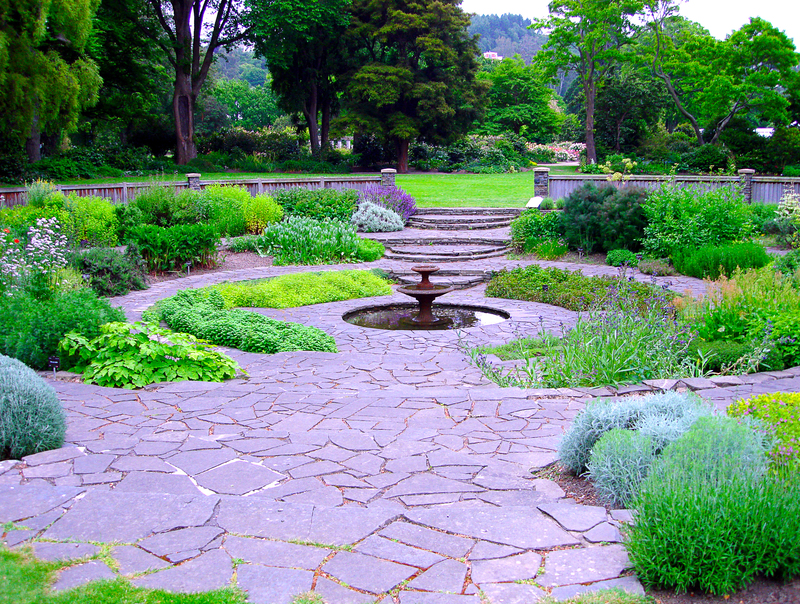Steps to Build an Engaging Garden for Children
Posted on 07/06/2025
Steps to Build an Engaging Garden for Children
Creating an engaging garden for children is a wonderful way to introduce young ones to the wonders of nature, spark their curiosity, and foster lifelong skills. Whether you have a large backyard or a small balcony, the journey to build a child-friendly garden is both rewarding and fun. In this comprehensive guide, we'll explore detailed steps, creative ideas, and practical advice to help you design and maintain a garden that captivates children of all ages.

Why Build a Garden for Kids?
An interactive children's garden is more than just a play space--it's an educational adventure. Gardens with kids in mind inspire learning through play, hands-on experiences, and discovery. Here are some key benefits of creating a children's garden:
- Encourages outdoor activity and reduces screen time
- Teaches responsibility and patience as they nurture plants
- Supports sensory development via touch, smell, taste, sight, and sound
- Enhances knowledge about food sources, pollinators, and the environment
- Fosters creativity and problem-solving skills
Planning Your Kid-Friendly Garden
Step 1: Choose the Right Location
Selecting the right spot is essential to create an interactive garden for children. Here are crucial factors to consider:
- Safety: Avoid areas near sharp tools, chemicals, or unsafe water features.
- Sunlight: Most plants thrive in at least 6 hours of sunlight. Pick a spot that receives enough light but also consider shaded areas for sensitive plants or resting zones.
- Visibility: Choose a spot you can easily monitor so kids remain safe while they play and explore.
Step 2: Design with Children in Mind
A well-designed child-focused garden maximizes engagement and learning. When planning your layout:
- Pathways and Zones: Add winding paths with stepping stones to encourage exploration. Design separate zones for planting, playing, and relaxing.
- Accessibility: Raised beds, container gardens, or vertical gardens put plants within easy reach for smaller children.
- Seating: Incorporate benches, logs, or picnic mats to provide comfortable seating for garden breaks and activities.
Step 3: Pick Suitable Plants
Selecting the right plants is a cornerstone of any engaging garden for children. Consider the following:
- Safety: Only choose non-toxic and edible plants. Avoid anything with thorns, toxic sap, or allergens.
- Variety: Mix vegetables, herbs, and flowers for a diverse sensory experience.
- Fast-Growing Plants: Children love instant results--radishes, sunflowers, lettuce, and beans grow quickly and keep interest high.
- Sensory Plants: Add plants with interesting textures, scents, and colors, such as lamb's ear, mint, or marigolds.
Building the Garden: Step-by-Step
Step 4: Get Children Involved from the Start
Involving kids in the planning and building process ensures they feel ownership of the garden. Here are a few age-appropriate ways children can participate:
- Choosing plants: Let them select seeds or seedlings.
- Design inspiration: Invite them to draw garden layouts or list their favorite colors and themes (like "pizza garden" or "butterfly haven").
- Preparing the soil: Show them how to dig, loosen, and enrich garden beds.
Pro tip: Assign each child their own small plot or container for complete ownership.
Step 5: Install Fun Features and Interactive Elements
Make your kid's garden vibrant and interactive by adding engaging features such as:
- Miniature fairy or dinosaur gardens
- Garden tunnels or tipis made from sturdy plants like runner beans or sunflowers
- Mud kitchens for pretend cooking with soil, leaves, and water
- Garden art created from painted rocks, homemade wind chimes, or colorful plant labels
- Wildlife habitat corners with bird feeders, bug hotels, or butterfly puddling stones
These touches are not only fun but also provide ongoing opportunities for learning and creative play.
Step 6: Encourage Exploration with Thematic Gardens
A themed children's garden amplifies interest. Here are only a few inspiring ideas:
- Pizzeria Garden: Grow tomatoes, basil, oregano, and peppers--then have kids make their own pizzas!
- Butterfly Garden: Plant milkweed, zinnias, and lavender to attract pollinators.
- Rainbow Garden: Organize flowers and vegetables in rainbow colors for visual delight.
- Sensory Trail: Place aromatic herbs and textured plants along a winding pathway.
Caring for the Garden
Step 7: Teach and Practice Basic Gardening Skills
Encourage active involvement in the care of the garden by teaching simple, essential skills:
- Watering: Show how to use a watering can or a gentle hose spray, emphasizing the importance of not overwatering.
- Weeding: Teach the difference between weeds and chosen plants, making a game out of weeding sessions.
- Harvesting: Let kids pick ripe produce and taste the literal fruits of their labor.
- Composting: Demonstrate how to turn kitchen scraps into valuable garden food, explaining the magic of decomposition.
Step 8: Document Progress and Celebrate Success
Make the journey memorable by encouraging children to track their gardening experiences:
- Garden journals: Record plant growth, weather observations, or sketches of bugs and flowers.
- Photo documentation: Take regular snaps and create a visual timeline.
- Seasonal celebrations: Host mini-harvest parties or garden picnics to honor progress and milestones.
Tips for Sustaining Engagement All Year Round
Maintaining an engaging outdoor space for children is about more than planting seeds. Here's how to keep the excitement going:
- Rotate crops: With each season, introduce new varieties and gardening experiments.
- Indoor gardening: Start seeds on windowsills or try hydroponic kits when it's too cold outside.
- Craft projects: Make birdhouses, paint pots, or create recycled garden decorations together.
- Garden-based games: Try scavenger hunts, plant-themed bingo, or "guess the scent" quizzes.

Essential Safety Tips for Building a Kid-Friendly Garden
- Supervise young children at all times, especially when using tools or around water features.
- Use only child-safe gardening tools with rounded edges and lightweight materials.
- Wear gloves, hats, and sunscreen during outdoor activities.
- Educate children about plant safety; teach them to identify and avoid unfamiliar or potentially harmful plants.
Frequently Asked Questions (FAQs)
What are the best plants for a kid's garden?
Easy, fast-growing, and edible plants like cherry tomatoes, sunflowers, snap peas, strawberries, and cucumbers are always favorites. Fragrant herbs (like mint or lavender) and touchable foliage (like lamb's ear) are also perfect for little explorers.
How do you make a garden safe for children?
Use only non-toxic plants, avoid chemical fertilizers and pesticides, cover any water features, and provide clear boundaries for play. Regularly check for sharp objects or anything hazardous.
What are some garden activities for children?
Gardening offers endless learning and entertainment, including:
- Seed starting and transplanting
- Watering and weeding
- Garden art and craft projects
- Observing insects and pollinators
- Harvesting and tasting produce
- Tracking growth in a garden journal
Can you build a children's garden in small spaces?
Absolutely! Use containers, hanging baskets, or vertical planters. Windowsills, balconies, or even sunny indoor areas can host a bountiful child-friendly garden.
Conclusion: Nurturing Growth, Discovery, and Joy
Building a kid's engaging garden is among the best gifts you can offer. The steps to create an attractive, educational garden for children are straightforward: plan thoughtfully, choose safe and exciting plants, add interactive features, foster participation, and encourage ongoing discovery.
By following these steps, you transform your home's outdoor space into a hub of exploration, learning, and family connection. Over time, you'll see not just blooming flowers, but blossoming curiosity, confidence, and happiness in the children who share in this gardening adventure.
Ready to get started? Gather your supplies, invite eager little hands, and embark on the joyful journey of creating a truly engaging garden for children in your home!

